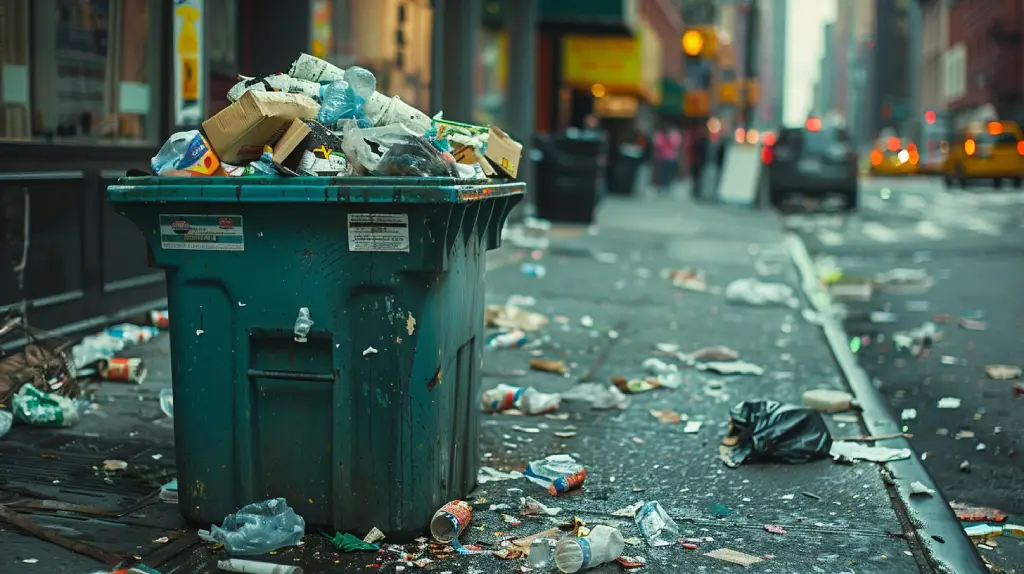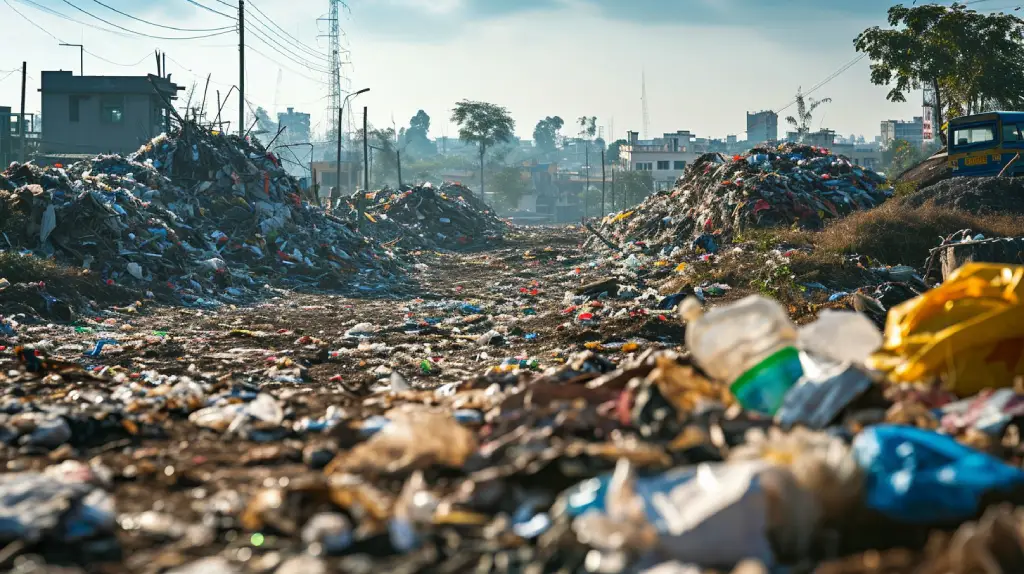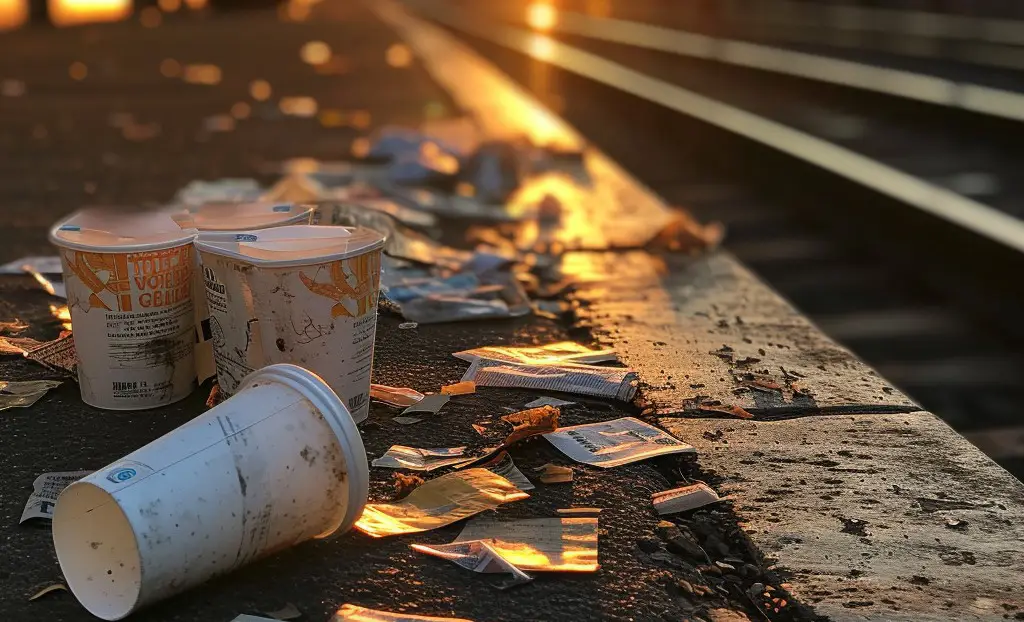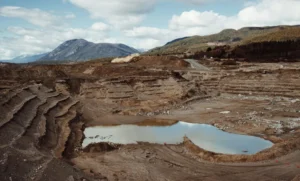
Littering, the act of improperly disposing of waste in public or unauthorized areas, has become a common issue with harmful effects on our environment, economy, and communities.
Littering is the careless disposal of trash in public places. It harms the environment, costs money to clean up, and can pose health risks.
Littering Meaning

Littering means carelessly throwing away trash in public places instead of putting it in a bin. It’s a disrespectful and harmful act that pollutes our environment.
To define litter in simple words, it’s trash thrown away in the wrong place.
It is a major environmental concern. From polluting water to killing wildlife, the extent of litter pollution goes much beyond what appears in one’s eyesight. Therefore, dealing with the problem necessitates an understanding and movement from a general public. This blog talks about causes, effects, and solutions for tackling this alarming threat.
What is Littering?

Littering is basically throwing trash where it doesn’t belong. It’s when people toss things like wrappers, bottles, or cigarette butts on the ground instead of putting them in a bin. Littering is more than an irresponsible activity; it is the behavior with consequences.
However, litter can also include larger items such as tires, furniture, and even construction debris
Some common litter examples include:
- Plastic bottles: a significant contributor to plastic waste
- Food wrappers: non-biodegradable items that clog drains and harm wildlife
- Cigarette butts: small in size, but large in terms of their impact-it is toxic and nondegradable.
Although some littering is intentional, for example, throwing trash from the window of a moving car, accidental littering such as an item flying from an overflowing garbage can also causes equal damage. It is not the intent that matters; instead, it is the build-up of unwanted waste in the environment.
Why Is Littering Bad?
It affects the environment and social living very negatively. Water bodies get polluted, wildlife suffers damage, soil gets infected, and ecosystems get restricted.
Moreover, littering creates unsightly environments; drives away businesses and tourists and drains huge financial resources, which could be well invested in essential services to provide benefits to the community and safeguard our communities.
Why Do People Litter?
People litter due to various reasons. Some lack awareness of the environmental impact, while others are influenced by the behavior of others.
A common mindset is “out of sight, out of mind,” as litterers often don’t consider the consequences of their actions.
Environmental Effects of Littering


Litter is a major source of pollution on land, water, and in the air. Annually, nearly 8 million tons of plastic end up in our oceans, killing marine life. From beaches and urban waterways, environmental litter strangles life from natural habitats. This type of litter pollution worsens over time and is, therefore, irreparable.
Think about the fact, decomposition of garbage produces Methane, a much stronger greenhouse gas that triggers climate change. However, some plastics take longer to even decompose, releasing microplastics to our soil and water where they remain over time.
Impact on Wildlife
For animals, litter is a silent predator. Over 1 million marine animals die annually due to entanglement in or ingestion of litter. Seabirds mistake plastic for food, leading to starvation. Turtles ingest plastic bags, mistaking them for jellyfish. The tragic result? Entire species face declining populations due to our garbage disposal negligence.
Spread of Disease
Littered environments are breeding pools of germs and diseases. Still water inside a can or a bottle is a perfect place for mosquitoes to harbor, increasing the chance of developing dengue fever or malaria, a direct threat to public health and compromising the cleanliness efforts in the community.
Littering is harmful to the environment. Plastic litter is a major issue due to its slow decomposition and release of harmful chemicals. Litter clogs waterways, causing floods and damaging habitats.
For more information on the environmental impact of littering, visit our blog post on this specific topic.
Economic Implications of Littering
Cost of Clean Up
Cleaning up litter is not cheap. U.S. municipalities spend around $11 billion every year on cleaning up litter. That’s education, healthcare, or infrastructure spending that could be done differently. It is shocking that cleaning up litter costs much more than managing waste properly with proper garbage disposal and waste management systems.
Impact on Local Businesses and Tourism
Littered streets and parks discourage tourists, taking revenue away from local businesses. Research indicates that litter-filled public spaces lower foot traffic, which further hurts local economies.
For example, a litter outbreak on Florida’s beaches cut millions of dollars from the state’s tourism industry. Reducing litter pollution is essential in reviving public cleanliness and supporting local livelihoods.
Social and Community Impacts
Visual Pollution
Litter is a blemish on the beauty of our surroundings, reducing the aesthetic value of neighborhoods and public spaces. It is unimaginable to live in a community where parks, sidewalks, and playgrounds are littered day in and day out.
The psychological impact is very real; research shows that individuals are less likely to feel safe and participate in outdoor activities in such areas.
Community Health Risks
Besides aesthetics, litter poses tangible health risks. Waste contaminants penetrate into the soil and water bodies putting residents at risk with chemicals.
This is further backed up by pests such as rats that multiply in these environments thus jeopardizing the public health further. Proper waste disposal practices can reduce such risks and ensure public cleanliness.
Facts About Littering
Littering is a global issue that has profound impacts. Some of the key facts are mentioned below:
- 75 percent of Americans have littered at some time or other in the past 5 years, according to Keep America Beautiful.
- 80 percent of marine debris is plastic, reports NOAA.
- Cleaning of litter in the United States costs more than $11.5 billion annually with businesses paying most of that cost.
- Plastic waste estimated to enter our oceans stands at 8 million tons annually, with a lot being produced from litter. This would equal the weight of 9 Empire State Buildings!
- A plastic bottle takes as long as 450 years to decompose in a landfill. That means that the plastic water bottle you threw on the ground today will still be littering the environment centuries from now.
Solutions to Littering

Picking up trash benefits everyone. It protects our waterways, rivers, wildlife, and communities. Removing litter prevents pollution, reduces hazards, and improves the overall appearance of our environment.
Proper waste management is important to prevent littering. By providing sufficient and accessible bins, promoting recycling, and educating the public, we can greatly reduce litter and create cleaner communities.
Recycling significantly reduces the amount of waste generated. By changing materials into new products, recycling decreases the demand for raw resources and reduces overall waste. This reduction in waste lessens the likelihood of littering.
Knowing what can be recycled helps prevent littering. People are more likely to recycle if they understand which items are recyclable such as trash bags and other products. This reduces overall waste and decreases littering.
Public Awareness Campaigns
Education is the basis for change. Programs such as Keep America Beautiful have shown that education alone can dramatically reduce litter. Through exposure to the environmental, economic, and social costs of littering, such programs inspire citizens to change their habits in regard to waste disposal and promote public cleanliness.
Community Involvement
Local clean-up events and volunteer programs are powerful tools for growing a sense of ownership and responsibility. Imagine neighborhoods coming together for monthly clean-up drives—not only does this reduce litter, but it also builds community spirit. Organizations and schools can play important roles in these efforts, promoting a culture of public cleanliness and waste management.
Legislation and Policy Changes
Severe anti-littering laws, along with stiff penalties, may discourage the public. California, for instance, has laws where offenders can be fined up to $1,000. What matters most is the implementation of such policies. If left unmonitored, it simply becomes a piece of paper.
Secondly, policymakers need to provide incentives for proper waste disposal. It has to encourage both corporate and personal responsibility towards sustainability.
The Bottom Line
Littering is more than just an environmental issue-it’s a social problem that involves affecting ecosystems, economies, and public health. The beginning lies with each of us holding ourselves accountable for our own behavior. Proper garbage disposal, active participation in community cleanups, and support for legislation against littering can collectively build a cleaner, healthier world.
So next time you’re tempted to toss that coffee cup on the ground, think twice. Small actions lead to big changes. Join the movement to combat litter pollution—because a cleaner planet starts with you.
For a comprehensive understanding of littering, explore these insightful resources.
FAQ's
What is the meaning of littering?
Littering is the irresponsible act of discarding trash or waste in public places, like streets, parks, or waterways.
Why is littering a problem?
Littering is harmful because it pollutes the environment, harms wildlife, and makes our communities less appealing. It can also lead to health issues and economic losses.
What is an example of littering?
Tossing a candy wrapper on the sidewalk, throwing a cigarette butt out of a car window, or dumping garbage in a river are all examples of littering.




